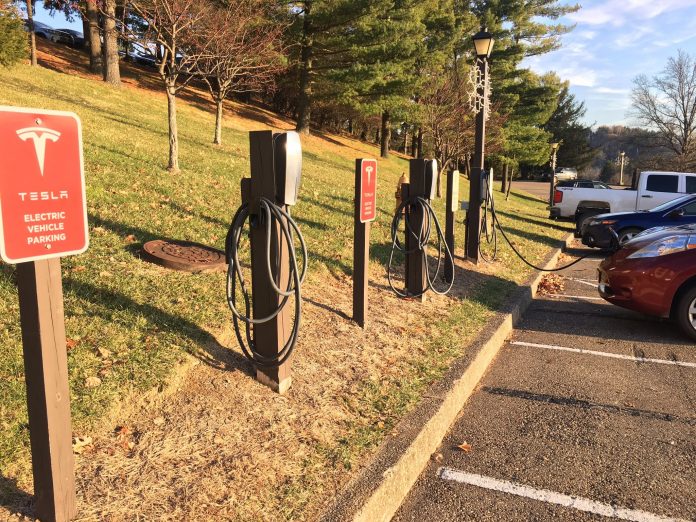DENVER — Urban centers across the country are experiencing strong growth in electric vehicles, driven by high customer satisfaction and financial subsidies.
However, the same level of interest has not translated to rural America, where range anxiety is a valid concern according to a new report from CoBank’s Knowledge Exchange Division.
Rural
Until electric vehicles can travel a minimum of 200 miles on a single charge and are priced similar to internal combustion engine vehicles, adoption in rural communities will likely remain muted.
“By 2025, penetration of EVs in rural America is expected to remain below 1 percent, but by the time it reaches 3 percent of new car sales in rural America, technology will be much better than it is today,” said Taylor Gunn, lead economist with CoBank.
“Some rural electric cooperatives will have customers on the edge of urban and suburban America and may want to consider building public infrastructure. But for now, most rural electric cooperatives are unlikely to realize material growth in EVs, limiting any near-term EV-related growth in electricity sales.”
Future
Future advances in battery technology will mean that EVs will travel hundreds of miles on a single charge, thereby reducing driver’s dependency on public charging infrastructure and reducing the costs shouldered by rural electric distribution cooperatives when deploying this infrastructure.
“When and if EV penetration rates justify a system-wide charging network, improved battery and charging technology will provide significant savings for the cost of this infrastructure to rural electric cooperatives,” said Gunn.











Oh, how wrong…
The advantages of EVs will come to rural America too…
“Until electric vehicles can travel a minimum of 200 miles on a single charge and are priced similar to internal combustion engine vehicles, adoption in rural communities will likely remain muted.”
Newer and newer models with over 300 mile range and lower cost will be coming out. Initial cost means much less in the long run. With 30 moving parts instead of 2,000 will mean less repairs. EV will have a much lower cost.
“Some rural electric cooperatives will have customers on the edge of urban and suburban America and may want to consider building public infrastructure. But for now, most rural electric cooperatives are unlikely to realize material growth in EVs, limiting any near-term EV-related growth in electricity sales.”
All that you need is a plug and a cheap EV charger AT HOME. Wire it up or plug it in. If you own an electric dryer or have a 220V outlet you have everything that you need to charge and run an EV.
““When and if EV penetration rates justify a system-wide charging network, improved battery and charging technology will provide significant savings for the cost of this infrastructure to rural electric cooperatives,” said Gunn.”
AGAIN. With solar and batteries you might not even need a “rural electric cooperative” If you have electric in your home you plug in your charger and run your EV.
““When and if EV penetration rates justify a system-wide charging network, improved battery and charging technology will provide significant savings for the cost of this infrastructure to rural electric cooperatives,” said Gunn.”
When disruptive technology hits the “tipping point” change happens VERY FAST! Always does.
The disappearing infrastructure will be you local gas station.
Remember with an EV and a charger, you will have a full tank EVERY MORNING!
“But for now, most rural electric cooperatives are unlikely to realize material growth in EVs, limiting any near-term EV-related growth in electricity sales.”
With solar and storage dropping self generation will be much more used.
““By 2025, penetration of EVs in rural America is expected to remain below 1 percent, but by the time it reaches 3 percent of new car sales in rural America, technology will be much better than it is today,” said Taylor Gunn, lead economist with CoBank. ”
“Experts” often have it VERY WRONG when it comes to disruptive technology. Often 100 X wrong.
I bet you are a very stupid person.You cant just have a charger at home if the nearest highway are Big city is atleast and hour drive.I would like to test a electric vehicle and see if it better than a gas or desiel veihicle.I would like to see it pull a gravity wagon full of soybeans all the way to the co-op
I want to know how it holds up in the back-country when I go hunting and don’t have access to an electrical outlet. Do they have solar panels like some of the RVs do? I can see that, but until someone can answer that question, I just want a 4WD hybrid.
I know several people who don’t have electricity and live rurally, 50 miles to the nearest public charging station, 5 ports in a city of 5000 that’s a popular tourist destination. EVs just don’t make sense for everyone. Nearest city > 10k people to me is nearly 90 miles. I do have electricity at home and have a volt, and I can tell you that in winter it gets 1/2 the advertised range. I think rural folks would be best served by waiting for the tech to mature. It just isn’t there yet. We had a fire in Rice, WA nearby that was caused by an electric vehicle, lost a home and a lot of forest, cost millions of dollars to fight, and contaminated quite a bit of land and farms and water supply with carcinogenic firefighting foam. This article does not factor in all the costs.